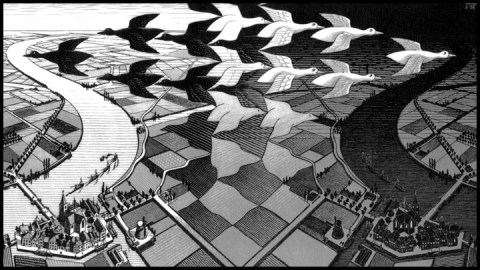If There Are Other Dimensions, Where Are They?

It’s an idea that goes way, way back, at least to Aristotle, and likely further. It’s the idea that there are more dimensions than the three we perceive: width, height, and depth. It’s a notion that has persisted into modern physics, and there’s nothing in the math to rule it out. In fact, it’s key to string theory. As theoretical physicist Brian Greene says, “The math suggests this as a real possibility — that there may be more dimensions.”
So how can this be? How can there be dimensions we can’t perceive, and maybe don’t experience?
Greene’s basic point frames the invisibility of other dimensions as an issue of size, saying our “left-right, back-forth and up-down are the big easy-to-see dimensions,” and that other dimensions may be too tiny to see.
Now, I’m no physicist, but there’s another possibility that strikes me as equally worth considering.
It could be the number of dimensions we’re able to see is limited by the human senses that define our perceptions. Are sight, sound, taste, smell, and touch the only senses an organism can have? We know that’s not true. Birds and some other creatures even here on earth seem to have at least one other sense that we don’t — they can perceive and navigate by the earth’s magnetic field.
Consider what we know about human sight and our limited range of color perception. It seems that certain animals, like the mantis shrimp, see different colors than we do. These are wavelengths in our own three dimensions and we don’t see them.
Of course, couldn’t there be dimensions no organism, terrestrial for otherwise, could perceive?
Whatever the reason, whether it’s an issue of size or our limited senses, Dimensions Four and up are one reason science has turned to math as a means of advanced exploration. And thank goodness. We can just follow the numbers.
Headline image: M.C. Escher, Cordon Art BV





